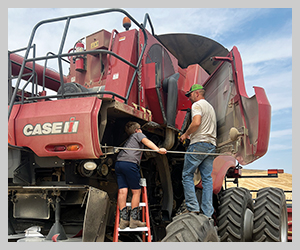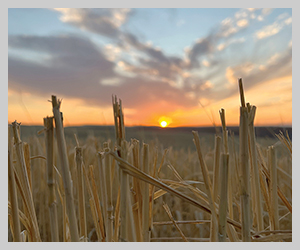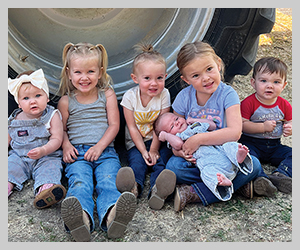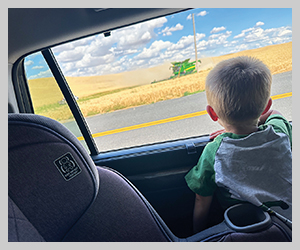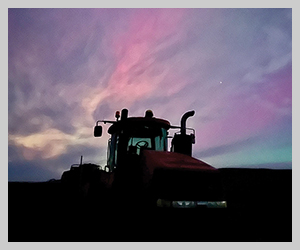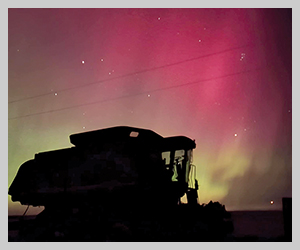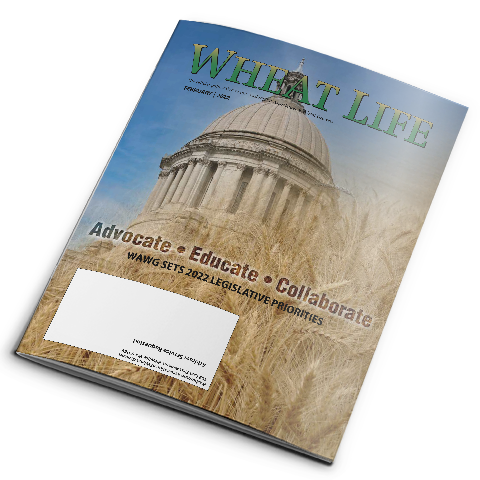A bitter experience Cold winters took toll on early Washington settlers and their livestock
2023November 2023
By Trista Crossley
Editor

In 1936, the state of Washington began a project to preserve the lore of its earliest pioneers. Elderly people receiving old age assistance through the State Department of Public Welfare were interviewed, and excerpts from those interviews were published in three volumes, the last one in 1938. “Told by the Pioneers. Reminiscences of Pioneer Life in Washington,” aimed to preserve, in the language of the pioneers or their children, the household tales of early days and to inspire in students the desire to unearth other stories to be preserved in the future. Here is an excerpt from Volume 3, pages 92-98, which talks about the toll harsh weather had on the state’s livestock industry.
The first severe stroke of ill luck was the hard winter of 1861-62. This winter was particularly hard on the east side and did its greatest damage to the cattle ranges. Snow so deep and cold so severe that range men lost practically all the stock in the territory. Settlements, as such, were so new that little or no preparation had been made to provide the stock with winter feed. Experiences of former winters had shown that outside range was available through the entire winter season.
The bitter experiences of 1861-62 were soon forgotten by the early settlers, and the new settlers, seeing their stock forage winter after winter, thought it would not happen again. Almost two decades did pass before the second hard winter came. In 1879-80, snow began to fall on Friday night in early January, and by Tuesday morning, it measured from four to eight feet in depth all over the state. Olympia, Seattle, Bellingham, and Vancouver on the west side reported over four feet. Towards the mountain ranges in eastern Lewis, Snohomish, and Skagit counties, depths of eight feet were reported. Mild weather came for a few days, softening the snow, then followed weeks of freezing weather, forming a crust the livestock were unable to break through. Again, heavy losses in livestock were taken.
On the east side, the snow fall was not so heavy, but the cold was more intense, and damage to livestock was heavier because of the greater number of people depending upon that kind of farming for a livelihood. This heavy loss to the range men, coupled with the opening of the central part of the state to homesteads, saw the last of the great herds of cattle and bands of horses.
Ten years later, almost to the day, occurred the third storm with similar results.

Elma Rees Turner, Walla Walla County
My grandfather, Michael Ward, came up here from Oregon, seeking a dry climate to relieve his throat trouble. He drove 300 head of cattle up from the Willamette, arriving here in time to lose all but 40 head during the severe winter of ’61 and ’62. He sold 13 of these and a calf for $1,000.
Joseph P. Lefevre, Spokane County
During the severe winter of 1889-90, I lost about 90% of my cattle through starvation. They were grazing as far south as the Snake River. A heavy crust formed on the snow, and we were unable to get them to grass. We had an abundance of feed at our ranch, but there was no way possible to get it to them. We were able to save almost all of the horses.
Julius C. Johnson, Lincoln County
At the beginning of the severe winter of 1889 and 1890, I had 30 head of horses and 30 head of cattle, but when the snow was gone, I had only three or four cows and three horses left, as the others were frozen or starved to death. When it was time for seeding, my remaining horses were in such a weakened condition that they could be worked only at short intervals, and it was necessary to do about half the seeding by hand.
William J. Heath, Spokane County
The winter of 1889-90 is a lasting memory with the settlers of the Big Bend Country, especially those in the livestock business. Several heavy snowstorms covered the ground to a depth of from two to three feet, and these were followed by rains and severe cold weather, causing a heavy crust of ice to form. Cattle and horses on the range died by the thousands from starvation, as it was impossible for them to break through the crust to graze. My brother and I ran out of feed but saved our horses by shoveling off patches of snow and ice down to the grass. One of my horses ate the fiber door mat. It became so serious that I told my brother if we couldn’t get them to the ranch of a neighbor, Mr. Hutchinson, who had hay, I intended to feed them the straw filling from the bed ticks. The following day, by much shoveling through drifts, we were able to get them to the neighbor’s.
George W. Wilson, Lincoln County
During the cold winter of 1889-90, a number of people would have frozen to death if “Wild Goose” Bill Condon had not come to the rescue by selling the settlers his rail fences at $5 per load. In December 1889, during the big snowstorm, we were living in a cabin in Wilbur. On the morning following the heaviest snow, we found our cabin entirely covered by a snow drift. It was necessary to tunnel my way out and shovel the snow from the windows. This was a tough winter for all of the settlers, as about 90% of the livestock was lost by freezing or starvation.
Mrs. E. M. Ferris (Esther M. Yaeger), Douglas County
The bunch grass hay, which had been stored the previous summer, would have been sufficient to have fed all the cattle in the country during any normal year, but in the cow-killing blizzard, it was only a wisp of straw in the wind. Snow was four feet deep in the valley. The storm from the north blew day after day. The hay was gone. The seed grain was fed. Hay was brought from the Big Bend Country and cost $50 per ton. Oats cost $.03 a pound while it lasted and until the Big Bend ranchers refused to sell any more.
The milch cows were kept alive by feeding a mixture of flour and water. The range cattle climbed to the round ledges of the mountains where the wind had blown away the snow, looking for bunches of grass that grew between the rocks. They were weak and starving and fell like plummets to the creek bed in Pine Canyon. A big beef steer would stagger to the door yard, fall, and beg with his eyes for help. The family, children and all, tramped trails to the round points on the mountains and tried to drive the cattle to them for the scanty feed. Some made it, but all ended up a mass of hoofs, horns, and tails sticking out of the snow at the bottom of the canyon. The stench of the rotting carcasses lasted the summer and yet another. Crows and coyotes speeded the disintegration. Two men with strong stomachs and weak sense of smell took the hides from the dead animals. What they did with them was not known, but the settlers sniffed their new boots with suspicion from then until now.
Robbins Schiller, Douglas County
In 1889-90, we were branching out in the stock business and lost many of our cattle. We had, however, bunch grass stored for winter, so were able to feed and save most of our stock. No one had ever had to feed before, and all were caught unawares. In order to save their beasts, farmers fed their seed grain on the plateau. Spring planting time was coming, and there was not a bit of grain on the plateau. The farmers had no money with which to buy.
A.L. Rogers fixed up a note, which the farmers signed. Rogers went out on snowshoes to Davenport, Wash., and got $2,000. He bought seed with the money, and the farmers were saved.



